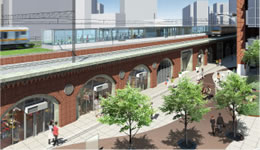After being closed for 70 years, the remains of this historic station and transportation museum have been opened to the public as a historic site.
The old platform is now a deck!
Built at the time the Old Manseibashi Station was opened (1912), this platform has been turned into a deck called the 2013 Platform. Walk up the two flights of stairs to the viaduct where the Old Manseibashi Station’s platform is located and you’ll feel like you’ve stepped back in time to the days when the station was open. Up on the platform is a café and observation deck surrounded by glass, where you can enjoy an amazing view of the trains on the Chuo Line going by on either side.
【Information for Visitors】
Name: Old Manseibashi Station
Address: 1-25-4 Kanda Suda-cho, Chiyoda Ward, Tokyo (inside mAAch ecute Kanda Manseibashi)
mAAch ecute Kanda Manseibashi (JR East Retail Net)
https://www.ecute.jp/maach/
Open hours of stairs and deck: 11:00am-10:00pm (8:30pm on Sundays and public holidays)
【LIBRARY is open 11:00am-9:00pm (8:00pm on Sundays and public holidays)】
Open 7 days a week but may be closed on some holidays (same as mAAch ecute Kanda Manseibashi).
【About the Station】
There used to be a station between Kanda and Ochanomizu Stations on the Chuo Line. This was Manseibashi Station. It was opened in 1912 and eventually closed in 1943, but some of its facilities, such as the platform and stairs, remain on the red-brick Manseibashi Viaduct to this day.
These remaining facilities have been restored because of their immense historical value. In addition to the 1912 Stairs, which are in much the same state as when the station first opened, and the 1935 Stairs, which were built when the Transportation Museum opened, you’ll find the 2013 Platform. A deck has been built on the old platform, with a free space and café. You’ll also see exhibits that trace the steps of Manseibashi Station from its opening to the present day.
【Guidebook】
■Kanda Manseibashi Machi Zukan (Pictorial Encyclopedia of Kanda-Manseibashi)
Kanda Manseibashi Machi Zukan looks at the Kanda-Manseibashi area from various different angles, from the best-kept secrets of the Kanda area to the history of Manseibashi Station.
It’s the official guidebook of mAAch ecute Kanda Manseibashi, with features such as information on tours of historical sites in the Manseibashi area and old photos that offer a valuable look into the history of the area.
You’ll also find a wide range of information that even people who are well-acquainted with Kanda may not know, from local history to food and walking routes through the architectural district.
An advance run of Kanda Manseibashi Machi Zukan was released at LIBRARY in mAAch ecute Kanda Manseibashi in September 2014, and the book has now been released at bookstores throughout Japan.
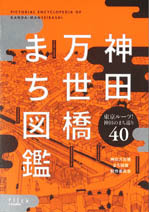
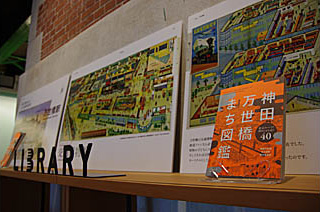
Kanda Manseibashi Machi Zukan was planned and edited by the Kanda Manseibashi Machi Zukan Production Committee
(JR East Station Retailing, East Japan Railway Culture Foundation, Flick Studio, MIKAN)
RRP: \1,800 (before tax)
【Attractions】
■1912 Stairs, Old Manseibashi Station
These stairs were built in April 1912, when Manseibashi Station first opened. When the Railway Museum (later called the Transportation Museum) was opened in April 1936, these stairs were used as a special entrance leading directly from the platform to the museum, and the Transportation Museum became a popular rest spot. Every part is made from high-quality materials - the stairs are carved from thick slabs of standard and Inada granite, and the tiles on the wall have the same fukurin meji style that is used between the bricks in Tokyo Station.
The stairs were not used by the public after the station was closed in 1943. 70 years later, they have been opened to the public again. Some repairs were carried out to ensure the safety of the viaduct while retaining the stairs’ original form to the greatest degree possible.
*Fukurin meji is a tiling and bricklaying method where the ends of the materials are rounded
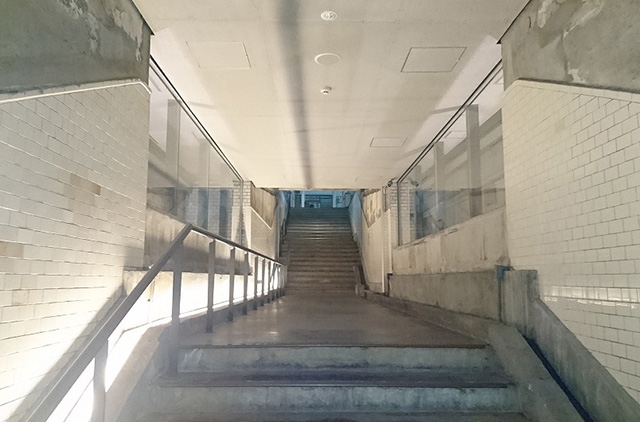
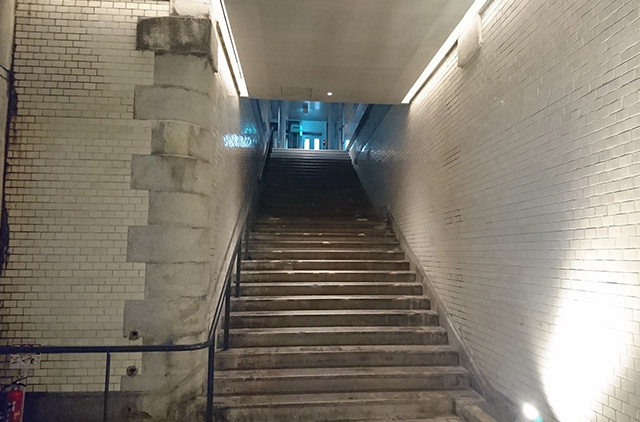
■1935 Stairs, Old Manseibashi Station
These stairs were built in 1935 with the construction of the new building of the Railway Museum (later called the Transportation Museum). They were also used as station stairs until the station was closed in October 1943.
These stairs remained in use for visitors to the Transportation Museum until it closed in 2006, but it was 70 years before they were fully opened to the public again.
With concrete steps and flat-jointed tiling on the walls, these stairs are a different style from the ones built when the station was first opened.
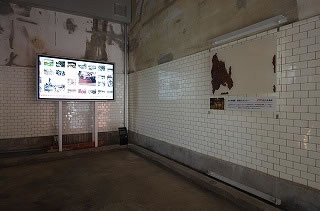
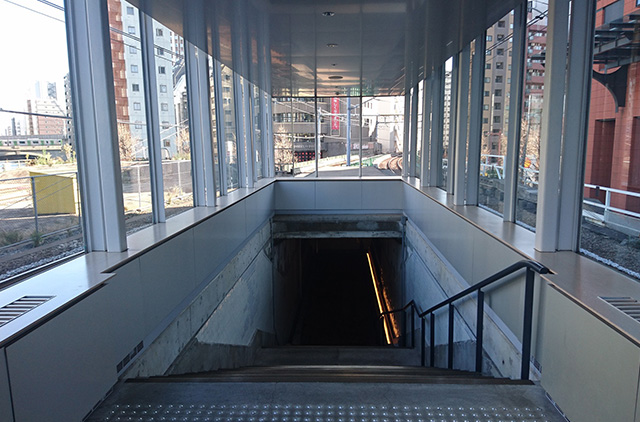
Partway up these stairs, you’ll see part of a poster that is thought to have been put up shortly before Manseibashi Station was closed. The poster was treated for preservation by the Transportation Museum and is now stored in the Railway Museum. A duplicate is exhibited in the poster’s original position, and features in the Manseibashi Archives, a video series played on a large touch-panel display. This series shows you a large number of photos chronicling the history of local features from Manseibashi Station to the Transportation Museum and mAAch ecute Kanda Manseibashi.

■2013 Platform (Café and Deck), Old Manseibashi Station
When Manseibashi Station was opened in April 1912, there were two platforms: a south platform for short-distance trains and a north platform for long-distance ones. When a quadruple track was built between Ochanomizu and Iidamachi, the north platform was removed and the track was used as a storage track. The platform has been modified several times over the years – part of the staircase was removed and rebuilt when the Transportation Museum was opened, and the shelter was removed after the station was closed – but the platform itself was never removed. The top of the platform has been remodeled to create the 2013 Platform, where you’ll find features such as a deck and café.
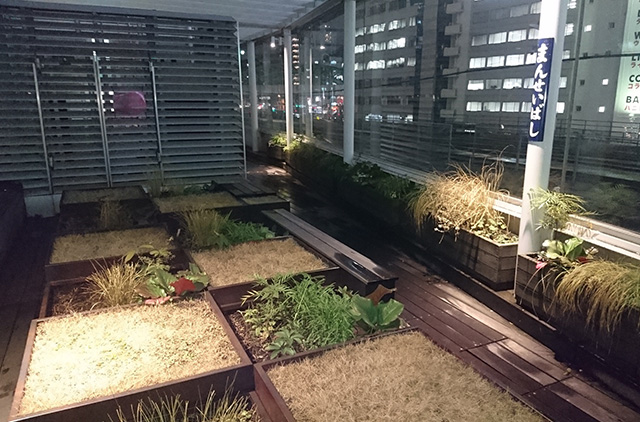
On the deck you’ll see a Manseibashi Station name plate that faithfully recreates the real one stored in the Railway Museum. We have also preserved part of the foundations of the platform’s old shelter, which was discovered during the construction process for the 2013 Platform. It was treated at the Institute for Conservation of Cultural Property at Tohoku University of Art and Design before being exhibited in its current spot.

■LIBRARY (Zone N8, mAAch ecute Kanda Manseibashi)
The area around Manseibashi Station was a thriving transport hub with a flourishing pop culture in the Meiji and Taisho periods (1868-1912 and 1912-1926 respectively). This culture is shared in LIBRARY, an exhibition area run jointly with JR East Retail Net. See a diorama of Manseibashi Station provided by the East Japan Railway Culture Foundation.

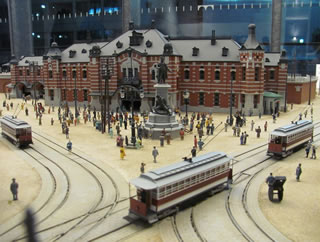
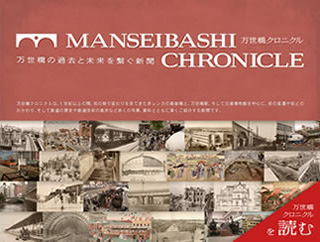
【Access】
- Address
-
1-25-4 Kanda Suda-cho, Chiyoda Ward, Tokyo (View Map)
-
- Akihabara Station
-
JR Line: 4-minute walk from the Electric Town Exit
Tsukuba Express: 5-minute walk from the A1 Exit
Tokyo Metro Hibiya Line: 6-minute walk from Exit 3
-
- Kanda Station
-
JR Line: 6-minute walk from North Exit
Tokyo Metro Ginza Line: 2-minute walk from Exit 6
-
- Ochanomizu Station
-
JR Line: 6-minute walk from Hijiribashi Exit
Tokyo Metro Marunouchi Line: 8-minute walk from Exit 1
-
- Shin-Ochanomizu
Station -
Tokyo Metro Chiyoda Line: 3-minute walk from Exit A3
- Shin-Ochanomizu
-
- Awajicho Station
-
Tokyo Metro Marunouchi Line: 3-minute walk from Exit A3
-
- Ogawamachi Station
-
Toei Shinjuku Line: 3-minute walk from Exit A3
-
- Iwamotocho Station
-
Toei Shinjuku Line: 6-minute walk from Exit A2

